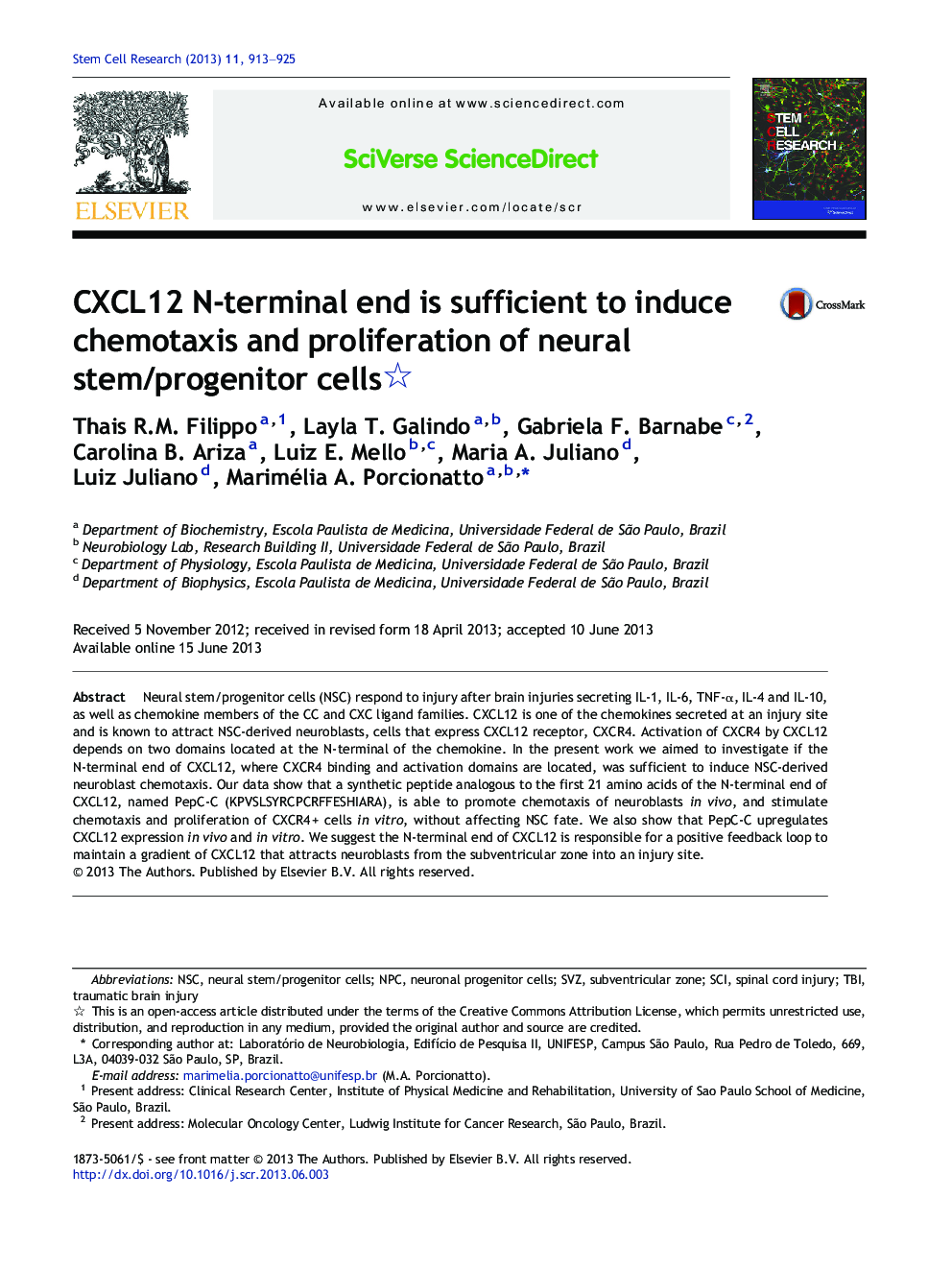| کد مقاله | کد نشریه | سال انتشار | مقاله انگلیسی | نسخه تمام متن |
|---|---|---|---|---|
| 10891420 | 1082029 | 2013 | 13 صفحه PDF | دانلود رایگان |
عنوان انگلیسی مقاله ISI
CXCL12 N-terminal end is sufficient to induce chemotaxis and proliferation of neural stem/progenitor cells
دانلود مقاله + سفارش ترجمه
دانلود مقاله ISI انگلیسی
رایگان برای ایرانیان
کلمات کلیدی
موضوعات مرتبط
علوم زیستی و بیوفناوری
بیوشیمی، ژنتیک و زیست شناسی مولکولی
بیوتکنولوژی یا زیستفناوری
پیش نمایش صفحه اول مقاله

چکیده انگلیسی
Neural stem/progenitor cells (NSC) respond to injury after brain injuries secreting IL-1, IL-6, TNF-α, IL-4 and IL-10, as well as chemokine members of the CC and CXC ligand families. CXCL12 is one of the chemokines secreted at an injury site and is known to attract NSC-derived neuroblasts, cells that express CXCL12 receptor, CXCR4. Activation of CXCR4 by CXCL12 depends on two domains located at the N-terminal of the chemokine. In the present work we aimed to investigate if the N-terminal end of CXCL12, where CXCR4 binding and activation domains are located, was sufficient to induce NSC-derived neuroblast chemotaxis. Our data show that a synthetic peptide analogous to the first 21 amino acids of the N-terminal end of CXCL12, named PepC-C (KPVSLSYRCPCRFFESHIARA), is able to promote chemotaxis of neuroblasts in vivo, and stimulate chemotaxis and proliferation of CXCR4 + cells in vitro, without affecting NSC fate. We also show that PepC-C upregulates CXCL12 expression in vivo and in vitro. We suggest the N-terminal end of CXCL12 is responsible for a positive feedback loop to maintain a gradient of CXCL12 that attracts neuroblasts from the subventricular zone into an injury site.
ناشر
Database: Elsevier - ScienceDirect (ساینس دایرکت)
Journal: Stem Cell Research - Volume 11, Issue 2, September 2013, Pages 913-925
Journal: Stem Cell Research - Volume 11, Issue 2, September 2013, Pages 913-925
نویسندگان
Thais R.M. Filippo, Layla T. Galindo, Gabriela F. Barnabe, Carolina B. Ariza, Luiz E. Mello, Maria A. Juliano, Luiz Juliano, Marimélia A. Porcionatto,